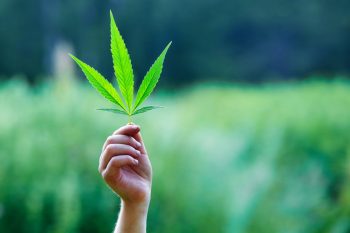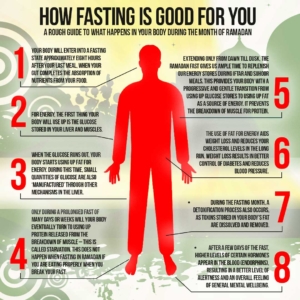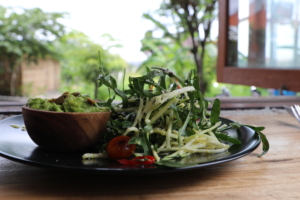
Medical marijuana has shown positive effects in treating mood disorders, degenerative neurological disorders, multiple sclerosis, Parkinson’s disease, post-traumatic stress disorder (PTSD) and seizures. In contrast, synthetic marijuana is not only void of healing components, but also puts you at risk of serious side effects, including stroke, brain damage, kidney problems, cardiac issues, acute psychosis, tachycardia and hypokalemia.
Marijuana, or cannabis, has been used for at least 5,000 years and has an extensive history of traditional uses as an industrial material and a botanical medicine all throughout Asia, Africa, Europe and America.1
Read on to learn more about medical marijuana’s healing benefits how it has gotten its bad rap and why you’d want your own state to approve its use, too.
What is Medical Marijuana?
The term “medical marijuana” refers to the use of the whole, unprocessed marijuana plant and its pure extracts to treat a disease or improve a symptom.2 It must be sourced from a medicinal-grade cannabis plant that has been meticulously grown without the use of toxic pesticides and fertilizers.
Marijuana’s incredible healing properties come from its high cannabidiol (CBD) content and critical levels of medical terpenes and flavonoids. It also contains some tetrahydrocannabinol (THC), the molecule that gives the psychoactive effects that most recreational users are after. Through traditional plant breeding techniques and seed exchanges, growers have started producing cannabis plants that have higher levels of CBD and lower levels of THC for medical use.
Although the Food and Drug Administration (FDA) has not yet approved medical marijuana,3 more and more physicians are starting to reverse their stand on the issue and swear by its effectiveness and health benefits.
In a 2015 CBS interview, U.S. Surgeon General Vivek Murthy acknowledged that marijuana may be useful for certain medical conditions, saying: “We have some preliminary data showing that for certain medical conditions and symptoms, marijuana can be helpful.”4
Likewise, CNN’s chief medical correspondent and neurosurgeon Sanjay Gupta also made a highly publicized reversal on his marijuana stance after the production of his two-part series “Weed.” In a commentary published on CNN’s website, he said:5
“There is now promising research into the use of marijuana that could impact tens of thousands of children and adults, including treatment for cancer, epilepsy and Alzheimer’s, to name just a few.
With regard to pain alone, marijuana could greatly reduce the demand for narcotics and simultaneously decrease the number of accidental painkiller overdoses, which are the greatest cause of preventable death in this country.”
How Does Medical Marijuana Work and What Diseases Can It Be Used For?
Historically, marijuana has been used as a botanical medicine since the 19th and 20th centuries.6 Today, marijuana’s claim as a potential panacea is backed up by countless studies crediting its healing potential to its cannabidiol content.
There is actually an endocannabinoid system in the human body. This ancient biological system, which also exists in other mammals, was first described in the journal Science in 1992,7 and is said to be responsible for releasing human cannabinoids that interact with cannabinoid receptors found in virtually all your tissues, embedded in your cell membranes.
Cannabinoid receptors can be found in your brain, lungs, liver, kidneys and immune system. Both the therapeutic and psychoactive properties of marijuana occur when a cannabinoid activates a cannabinoid receptor.8
There’s still ongoing research as to how far they impact your health, but to date, it’s known that cannabinoid receptors play an important role in many body processes, including metabolic regulation, cravings, pain, anxiety, bone growth and immune function.9 Overall, it’s said that cannabinoids bring balance to your tissues and biological systems.
Dr. Allan Frankel, a board-certified internist in California who has successfully treated patients with medical marijuana for more than a decade, has personally seen tumors virtually disappear in some patients using no other therapy except taking 40 to 60 milligrams of cannabinoids a day. Other common ailments that may benefit from medical marijuana use include:
| Arthritis, osteoarthritis or rheumatoid arthritis10 |
Degenerative neurological disorders such as dystonia11 |
| Multiple sclerosis12 |
Parkinson’s disease13 |
| Post-traumatic stress disorder (PTSD)14 |
Epilepsy and seizures15 |
CBD also works as an excellent painkiller and works well in treating anxiety issues.16 Cannabis oil, on the other hand, when applied topically may help heal sunburn overnight.
How to Obtain and Use Medical Marijuana
At present, medical cannabis is now legal in 30 U.S. states. Most of these areas permit its use under certain medical circumstances only, and some allow CBD oils or pills only. In eight states, it’s legal to be used recreationally.17,18
In states where medical marijuana is legal like California, Colorado, Vermont and New York, you can join a collective, or a legal entity consisting of a group of patients that can grow and share cannabis medicines with each other. By signing up as a member, you gain the right to grow and share your medicine.
Frankel notes that a patient who’s at the age of 18 can secure a medical cannabis card recommendation letter if their attending physician or doctor of osteopathic medicine (D.O.) advises or agrees to it. With your medical cannabis card, you now have the liberty to choose the collective you want to belong to. Medical marijuana can be administered to patients using one of the following methods:19,20
| Inhalation — Allows the patient to titrate the dosage. It has an instantaneous effect as the medication is rapidly taken into the lungs and quickly absorbed through the capillaries into the bloodstream. The effects of inhaled cannabis will last approximately four hours. |
| Smoking — Can be done using a joint or the cigarette form (hand-or machine-rolled), a pipe, or bong (water pipe). Smoking medical marijuana by joint is believed to be inefficient, though, as the medication goes with the smoke as the cigarette burns. Smoking small amounts using a water pipe is more advisable because the cool smoke is less irritating to the airway. This method is not recommended to anyone with lung damage. |
| Vaporization — Like a nebulizer treatment, cannabis can be heated to a temperature that will release the medication in vapors to be inhaled by the patient. |
| Sublingual (under the tongue) or oramucosal (in the oral cavity) delivery — Made possible using oils or tinctures, it is readily delivered into the bloodstream and provides a rapid effect. Tinctures can be administered through a dropper under the tongue or sprayed in the mouth to be absorbed in the oral cavity. This is highly recommended for nonsmoking patients. |
| Oral ingestion — Nonsmokers can also take medical marijuana through pills or mandibles, which are edible cannabis products in the form of teas, cookies or brownies.The primary drawback of this approach is that because cannabinoids are fat-soluble, there may be issues when it comes to absorption, depending on the patient’s metabolism. A good workaround for this problem is using cannabis butter, which fat-soluble cannabinoids blend well with. |
| Topical application — Cannabis can be applied as an ointment, lotion or poultice for treating skin inflammations, arthritis and muscle pain. It is unclear how cannabinoids are absorbed transdermally, although its credit should also go to the more soluble terpenoids and flavonoids that also have anti-inflammatory properties. |
Keep in mind: Make sure that your medicine has been sourced from a medicinal-grade cannabis plant without the threat of chemical residues, which may cause further harm. It’s also important to find a knowledgeable cannabis physician who can help you determine the correct amount you need, as proper dosing is crucial when using medical cannabis.
Potential Side Effects of Medical Cannabis
Dr. Margaret Gedde, a Stanford-trained pathologist and award-winning researcher who specializes in the therapeutic use of cannabis, says the only concern you’ll have to worry about medical marijuana is the psychoactivity of THC or its ability to make you feel “high.” Too high a dose of THC can also trigger anxiety. You can avoid this side effect by specifically looking for high CBD and low THC marijuana formulations.
“THC can induce anxiety if the dose is wrong or the strain is not compatible with that person. [Still], many use THC to relieve anxiety. Because we have hundreds of different strains of marijuana and cannabis, each of which is slightly different, there is a huge potential to customize [the drug] for each person,” Gedde explains.
She also notes that CBD and THC actually work very well in combination. She notes that CBD actually helps temper the psychoactivity of the THC. What’s more, when the plant is unheated or used raw, it actually does not contain THC, but rather THC acid (THCA). So if you eat it raw, you get the THCA, which is responsible for relieving pain and spasms. THCA acts as a synergizing agent, yet it doesn’t deliver the psychoactivity associated with THC. Hence, consuming marijuana raw will let you reap the benefits without the adverse effects.
Beware of Synthetic Marijuana
The risk brought by different versions of synthetic marijuana should also be considered. Imported from Asian countries under the guise of potpourri, herbal incense and even plant food, the synthetic powder is mixed in a lab and shipped to the U.S., where retailers spray it onto a leaf — often an herb or a spice — that can be smoked, just like pot.
It not only binds to cannabis receptors in your body up to 1,000 times more strongly than standard marijuana, but also produces gripping effects on serotonin and other receptors in your brain. You can’t overdose on real pot, but you CAN overdose on synthetic versions — and it doesn’t take very much.
Most people don’t realize how dangerous synthetic marijuana can be. Unlike medical marijuana, synthetic marijuana not only is void of any healing component, but also may put you at risk of serious side effects, including:21,22
- Stroke
- Seizure
- Brain damage
- Cardiac problem
- Kidney problem
- Acute psychosis
- Hypokalemia (a deficiency of potassium in the bloodstream)
- Tachycardia (an abnormally rapid heart rate)
I highly recommend asking your physician or D.O. about reputable medicinal-grade marijuana plant growers or credible apothecaries near your area that sell natural cannabis products for medicinal purposes.
If Marijuana Is so Beneficial, Why Is It a Schedule 1 Drug?
In one of my interviews with Frankel, he explained how people have forgotten cannabis was once a botanical medicine, and how it became known as a notorious form of illegal drug:
“What happened in the ’60s and ’70s was that due to desires for psychedelia, the changes in the war in Vietnam, and the war on drugs with Nixon, the types of strains that were available and the demand for psychedelia changed. Before we knew it, CBD — due to a lack of ‘stoniness’ — was bred out of the plant.”
As a result of growers breeding out the all-important CBD, marijuana became known primarily as a plant that gets you high. Its original medicinal properties and uses largely fell by the wayside.
Currently in the U.S., marijuana is classified as a Schedule 1 controlled substance, a category reserved specifically for the most dangerous illicit drugs, such as heroin, lysergic acid diethylamide (LSD) and ecstasy.23 Based on the 1970 Controlled Substance Act, drugs from this group:24
- Have a high potential for abuse
- Have no accepted medical use in the United States
- Have lack of accepted safety under medical supervision
Personally, I find it disheartening that something as promising as marijuana is being demonized due to inappropriate use.
It’s such a shame, too, that the federal government seemed so careless in approving the recreational use of marijuana (which made the ongoing cycle of substance abuse and addiction in our country even worse), but played it tough when it comes to approving medical cannabis, which could potentially benefit countless of people by improving many conditions and taking the place of a number of synthetic drugs. Who would not want that? Well, clearly, not those whose bottom line would be affected.
Stay Informed on Medical Marijuana and Other Homeopathic Treatments
Homeopathic remedies have always been under assault, and the case with medical cannabis is a clear example. Despite its outstanding health potential if used in medicinally appropriate methods, it’s still shunned by federal agencies and demonized to be “dangerous” — even though there’s no risk of overdose or death from cannabis, which is something that cannot be said for other conventional remedies like opioids.
It really all boils down to freedom of choice. I believe that if a homeopathic is working for you, then you should be allowed to use it, especially considering the other things you’re allowed to use but expose you to significant if not extreme risks, like alcohol, cigarettes or opioids and certain over-the-counter medications.


 Considered by many as a staple in any serious kitchen, olive oil has also achieved mythic stature as the ultimate healthy ingredient, protecting us from heart disease.
Considered by many as a staple in any serious kitchen, olive oil has also achieved mythic stature as the ultimate healthy ingredient, protecting us from heart disease. To evaluate whether or not olive oil is indeed ‘heart-healthy’, we first need to understand a few facts about vascular biology.
To evaluate whether or not olive oil is indeed ‘heart-healthy’, we first need to understand a few facts about vascular biology. Not surprising, significant FMD impairment can be seen after someone smokes or eats a lot of fat, sugar and/or salt in a meal. FMD impairment is also detected when someone suffers from mental stress or a chronic disease like high cholesterol or diabetes.
Not surprising, significant FMD impairment can be seen after someone smokes or eats a lot of fat, sugar and/or salt in a meal. FMD impairment is also detected when someone suffers from mental stress or a chronic disease like high cholesterol or diabetes. In a cohort study designed to measure the effects of a Mediterranean diet as the primary prevention of cardiovascular disease, extra virgin olive oil (EVOO) was shown to be better than regular olive oil, but neither significantly reduced heart attack rates.
In a cohort study designed to measure the effects of a Mediterranean diet as the primary prevention of cardiovascular disease, extra virgin olive oil (EVOO) was shown to be better than regular olive oil, but neither significantly reduced heart attack rates. It appears that the low heart disease rate associated with a Mediterranean diet is in spite of olive oil—not because of it!
It appears that the low heart disease rate associated with a Mediterranean diet is in spite of olive oil—not because of it! Atherosclerosis is the narrowing of blood vessels due to the buildup of waxy ‘plaques’ – clumps of fat and debris – along the vessel walls. The vessels become narrow and rigid, causing the heart to have to work harder to deliver oxygen to our bodies and increasing the risk of heart attacks. To make matters worse, the fat in the plaques is easily oxidized, releasing dangerous free radicals that further damage blood vessels.
Atherosclerosis is the narrowing of blood vessels due to the buildup of waxy ‘plaques’ – clumps of fat and debris – along the vessel walls. The vessels become narrow and rigid, causing the heart to have to work harder to deliver oxygen to our bodies and increasing the risk of heart attacks. To make matters worse, the fat in the plaques is easily oxidized, releasing dangerous free radicals that further damage blood vessels. Many argue that olive oil is a better alternative than other saturated fats. While there is some truth to this (olive oil does appear to cause relatively less damage than saturated animal fats), it is important to note that ‘less damage’ is still damage.
Many argue that olive oil is a better alternative than other saturated fats. While there is some truth to this (olive oil does appear to cause relatively less damage than saturated animal fats), it is important to note that ‘less damage’ is still damage.
